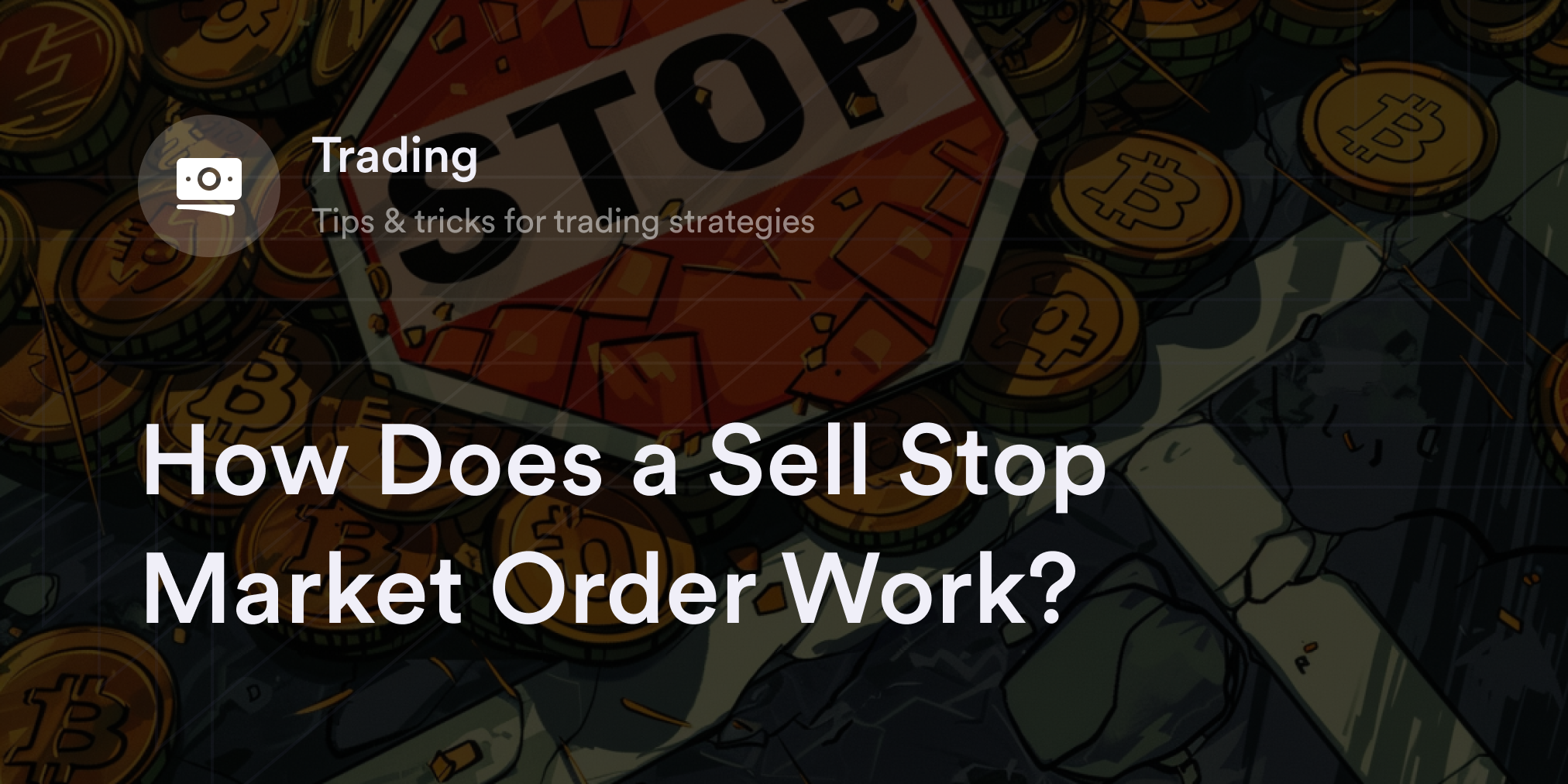


It's easy to feel warm and cozy about cryptocurrencies as prices soar, but remaining cheery during the clammy crypto winter is a different story. As this cold snap sucks the vitality out of the blossoming blockchain space, only the most determined developers have the strength to pick themselves up and keep plowing forward.
But this crypto season isn't just about survival. Some of the greatest innovations in Web3 happen during this seemingly dark stage, and patient crypto traders with strong foresight have some remarkable opportunities in front of them.
In this guide, we’ll discover what crypto winter is, how to survive the cold price winds, and how long it usually lasts.
What is crypto winter?
Crypto winter is a prolonged period when cryptocurrency prices and trading activity are at their lowest levels. Typically, these “cold” seasons contrast prior periods of upward price momentum (aka bull markets) and begin after a major market meltdown. After most sellers offload their positions and the average daily trading volume for crypto assets stagnates, it's safe to assume traders are in a wintery phase, with less fear of missing out (FOMO) and more fear of living through it.
This season is also called the height of the bear market for crypto assets, which is another way of describing times of low price action and decreased trader interest.
Common features of a crypto winter
When the last flicker of FOMO-fueled fun fades, traders know they're in for a crypto winter. While predicting the precise moment a crypto winter starts is difficult, there are a few telltale signs the frost has already entered Web3.
Reduced trading activity
Volume—or the amount of average trading activity for digital assets—is an essential indicator traders use to gauge interest in the crypto market. Typically, volume levels are represented as bar charts on the bottom of a cryptocurrency's price chart and give a clear indication of how many people exchange coins and whether there are more buyers than sellers.
During a crypto winter, these volume levels on exchanges are lower than in prior market phases.
Tight price ranges
These suppressed volume levels translate to less volatile price action for cryptocurrencies during winter. Cryptocurrencies often stay in sideways or down-trending price patterns with only a few sporadic and short-lived rallies (aka dead cat bounces) that can't sustain momentum due to the intense selling pressure.
More FUD
Short for fear, uncertainty, and doubt, FUD describes the mood most crypto traders feel during major market drawdowns and crypto winters. The sense of unease, pessimism, and tension is palpable during this phase, with traders fearful crypto prices are headed lower. If traders make an emotion-based trade during a crypto winter, it's more likely they panic sell due to FUD than impulse buy due to FOMO.
Minimal mainstream interest
Search activity for terms like "Bitcoin" and "crypto" tends to wane on websites like Google during crypto winters. Although there are always developments in blockchain technology and Web3, more people aren't interested in following crypto news when volumes are low and prices aren't pumping. Even if there are any major news stories on cryptocurrencies, they tend to be negative, FUD-influenced pieces.
What triggers a crypto winter?
There's no single cause behind every crypto winter, but the reasons for entering this phase aren't positive. Typically, something dramatic and detrimental for digital assets sends the crypto market into a tailspin and crash landing in the Arctic zone.
Scandals or hacks
Headline-grabbing news of security breaches or scams on major crypto protocols often precedes a crypto winter. For example, reports of the hack of 850,000 BTC on the Mt.Gox exchange in 2014 sent Bitcoin's price into a multiyear slump.
Similarly, the bankruptcies of crypto exchanges like FTX and the collapse of crypto projects like Terra Luna put a strain on crypto prices in 2022.
Technical glitches and project failures
If cryptocurrencies or decentralized applications (dApps) have weak coding standards, these vulnerabilities sometimes trigger negative price action.
For example, when Terra's algorithmic stablecoin UST lost its 1:1 parity with the U.S. dollar in 2022, mostly due to design flaws, it intensified selling pressure in the crypto market and led to a significant price drawdown.
Poor economic data
Cryptocurrencies, due to their volatile nature, tend to perform best when the overall global economy is stable, and traders feel comfortable taking risks with their portfolios. If macroeconomic factors like unemployment, interest rates, or inflation aren't favorable, traders sometimes feel more comfortable exiting riskier crypto assets, triggering a bear market.
Also, when there’s FUD around other asset categories like stocks, the winter season tends to add price volatility to the virtual currency sector.
Overheated price action
Sometimes, cryptocurrency prices reach unsustainable levels (aka bubbles) during the height of bull market mania and begin to "burst" once more traders start to sell their quick profits at the same time.
A common characteristic of bubbles for cryptocurrencies is increasing attention to niche and speculative assets, such as the explosion of questionable initial coin offerings (ICOs) before the 2018 crypto winter and the rise of profile picture non-fungible tokens (NFTs) before the 2022 bear market.
How long do crypto winters last?
Crypto winters refer to long-lasting periods of sluggish price action, but there's no set schedule for when a crypto winter will end. However, a true crypto winter typically lasts longer than short-term market corrections. Crypto traders usually prepare for a crypto winter to drag on for one or more years rather than a few months.
There’s also a four-year cycle theory in crypto circles, which suggests the end of crypto winter occurs roughly two to three years after a major event on Bitcoin's blockchain called the halving.
Every four years, Bitcoin's inflation rate gets cut in half, which creates a major supply shock in the crypto market and often correlates with prior bull markets. According to the four-year cycle theory, the price pump after a Bitcoin halving eventually reaches an unsustainable peak before falling into a multiyear crypto winter, only to repeat this cycle when the next halving happens four years later.
The argument for the crypto market's four-year cyclicality is popular, but it's a speculative theory and can't predict the time or length of a crypto winter.
Tips to thrive during crypto winter
It's understandable to feel down during crypto winters, especially if traders believe in blockchain and hold (aka HODL) large positions in multiple coins. But it's not all bad news during a crypto winter. There are a few ways traders preserve their purchasing power during this phase and capitalize on the discounted prices for crypto assets.
Research dollar-cost averaging (DCA)
Crypto winters are attractive for traders interested in buying the dip in cryptocurrencies they feel have long-term potential. While some traders buy their full position outright (aka lump-sum buying), others use strategies like DCA to gradually enter positions throughout crypto winter.
For context, DCA is a common strategy used to even out the average purchase price (aka cost basis) in a crypto position and take advantage of multiple bearish pullbacks.
Experiment with short-selling strategies
Many financial vehicles are available for crypto traders interested in profiting from price declines. Techniques such as short-selling, put options, and short perpetuals allow crypto traders to hedge losses in long positions or speculate on downward price action.
Study technical chart patterns
Technical analysis focuses on studying chart patterns and indicators to set up trading strategies and predict future prices for crypto assets. The more traders know about telltale signs in technical trading, the easier it is to rearrange portfolios for a winter scenario and choose the best positions for their risk tolerance.
Focus on long-term potential
Crypto enthusiasts often encourage each other to stay strong with memes like "Hold On for Dear Life" or "diamond hands" during the depths of a crypto winter. Although crypto winters aren't fun times for crypto HODLers, they won't last forever, and there's always a chance the crypto market will rebound in the future.
Eligible traders can make the most of crypto winter on dYdX
Whether the crypto market is spicy or snowy, dYdX has tools for eligible traders looking to take advantage of crypto perpetual contracts. On our low-fee decentralized exchange, eligible traders have access to precise order types, leverage, and slippage tolerance controls for long and short crypto perps. Find out all the details on dYdX's latest products and services on our official blog. Also, head to dYdX Academy for more in-depth guides on all things Web3, and eligible traders can start trading on dYdX today.
Disclosures
The content of this article (the “Article”) is provided for general informational purposes only. Reference to any specific strategy, technique, product, service, or entity does not constitute an endorsement or recommendation by dYdX Trading Inc., or any affiliate, agent, or representative thereof (“dYdX”). Use of strategies, techniques, products or services referenced in this Article may involve material risks, including the risk of financial losses arising from the volatility, operational loss, or nonconsensual liquidation of digital assets. The content of this Article does not constitute, and should not be considered, construed, or relied upon as, financial advice, legal advice, tax advice, investment advice, or advice of any other nature; and the content of this Article is not an offer, solicitation or call to action to make any investment, or purchase any crypto asset, of any kind. dYdX makes no representation, assurance or guarantee as to the accuracy, completeness, timeliness, suitability, or validity of any information in this Article or any third-party website that may be linked to it. You are solely responsible for conducting independent research, performing due diligence, and/or seeking advice from a professional advisor prior to taking any financial, tax, legal, or investment action.
You may only use the dYdX Services in compliance with the dYdX Terms of Use available here, including the geographic restrictions therein.
Any applicable sponsorship in connection with this Article will be disclosed, and any reference to a sponsor in this Article is for disclosure purposes, or informational in nature, and in any event is not a call to action to make an investment, acquire a service or product, or purchase crypto assets. This Article does not offer the purchase or sale of any financial instruments or related services.
By accessing this Article and taking any action in connection with the information contained in this Article, you agree that dYdX is not responsible, directly or indirectly, for any errors, omissions, or delays related to this Article, or any damage, injury, or loss incurred in connection with use of or reliance on the content of this Article, including any specific strategy, technique, product, service, or entity that may be referenced in the Article.







